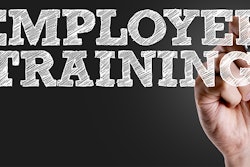Manufacturing jobs in the United States have been on the decline over the past few decades. However, the manufacturing output has (and will continue to) grow strongly. This puts a strain on new and existing employees, because not only are they expected to do more and put out more with fewer people to help, but they also must ensure they aren’t sacrificing an imperative part of the business: quality. Getting the product out the door quickly is important, yes, but it also must be undamaged and error-free. How can manufacturing companies maintain product quality, while also keeping their employees engaged and motivated in a time where jobs are in flux?
Gamification is the process of adding games or gamelike elements to something (such as a task). A popular example of gamification that many have likely heard of is Foursquare — the mobile app that grew in popularity a few years back, turning “life into a game” by allowing users to check-in to different locations and earn badges as they do so. Gamification has grown in popularity among a wide range of industries but is especially pertinent for manufacturing companies.
Gamification is a process that fights against tasks that can easily become routine, and prevents employees from “zoning out” — a potentially dangerous occurrence, even more so in the manufacturing industry. An unengaged employee is more likely to contribute to errors and mistakes, and according to Gallup, only 15 percent of employees are engaged worldwide.
Gamification can do so much more than improving productivity too - it can also improve another important facet of the company: quality. Quality counts throughout the supply chain, and customers now expect it more than ever before.
How can manufacturers quantify quality, and what are some challenges when mixing gamification and quality? Here are some best practices and ways companies can transform the organization through gamification.
Quantifying Quality
Gamification is successful because it offers direct, anticipated rewards to high performers through things like incentive pay and notoriety among peers and recognition from superiors. While this is easy to tie to metrics like employee productivity or on-time shipment, it becomes a little harder to quantify in the realm of quality which relies at least partially on subjective judgment.
There are two key steps manufacturers must take to combat this when implementing gamification as it relates to quality:
- Determine which outcomes equal quality in the eyes of the supply chain and customer base, and the applicable quality standards
- Set goals for employees to pursue those outcomes to earn “quality points” within the gamification model
Good quality metrics are necessary to drive the right behaviors. To achieve this, assign numerical values to certain quality activities, such as assigning quality bonus points for completing tasks like the number of error-free line changeovers or an associates DPMO rate (Defects Per Million Opportunities). Training retention, error rate reduction, and process adherence are all examples of activities that can be performed smarter — and can be added to gamification models with just a little innovation.
Transforming Gamification with Quality Metrics
Gamification relies heavily on productivity, but quality adds dimension to the gamification model. It's not a straight-shot to the finish line; it will require incorporating additional inputs and recognizing and adhering to those concepts and standards that are not directly linked to the forward momentum of productivity.
If a company only leans on speed or volume as the only gamification measure, added the quality dimension could be a little disorienting for the team — even more so if the company doesn’t already extensively review quality metrics. Employees will need guidance, but will especially need examples of “quality well done.” This will help them refocus from the time or volume-based achievements they were used to. This will require the buy-in of management to lead the way. When implementing gamification, it’s important the logic incorporated into the technology includes rewards for quality work.
Challenges to Mixing Quality and Gamification
This culture shift of rewarding quality-based behaviors instead of only productivity takes time, and leadership will need to invest in these rewards to ensure quality truly becomes a part of the gamified culture.
Using gamification and rewarding memory and consistency in these behaviors helps cement quality in employees’ daily work. At the end of the day, companies will want to be able to confidently answer “Yes” to:
- Did the employees do their work in the correct order?
- With the correct tools?
- Within the right amount of time?
- Without error?
The Future of Gamification and Quality in Manufacturing
As technology’s capabilities continue to grow and technology in general becomes smarter, undoubtedly gamification will continue to grow in popularity. When it comes to gamification and quality, it won’t be a question of if the technology can support it, but if your leadership teams feel quality is valuable enough to invest in and is creative enough to implement it.
Brandon White is Corporate Director of Quality and Regulatory Affairs at Kenco.























